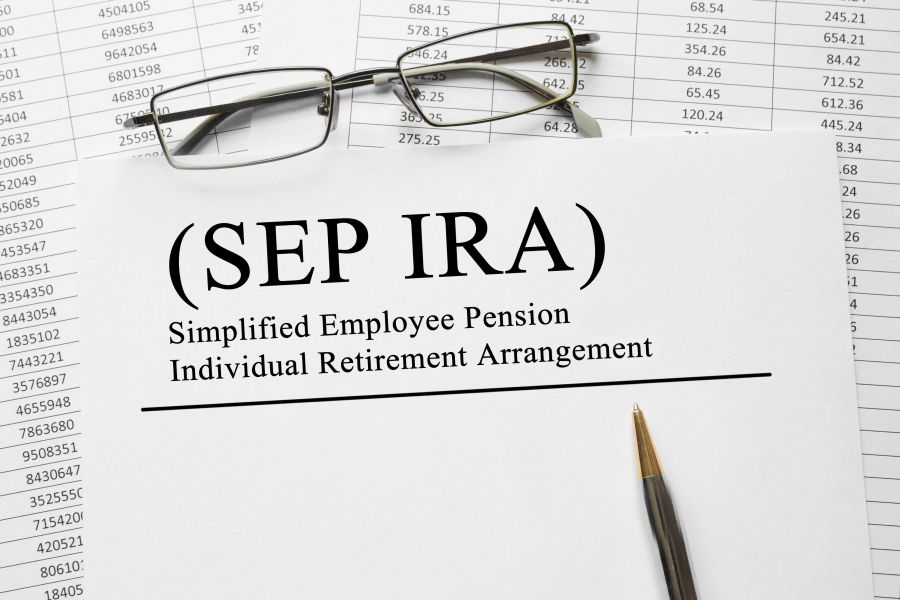Comparing 401(k) and 403(b) retirement plans? The main difference comes down to your employer—401(k) plans are for private companies, while 403(b) plans are for nonprofits and public institutions.
But choosing the right plan isn’t just about where you work. Fees, investment options, employer contributions, and rollover rules can all affect your long-term savings.

This guide breaks down how each plan works, what makes them different, and what they have in common—so you can make the most of your retirement strategy.
What Is a 401(k) Plan?
A 401(k) is a retirement savings plan offered by private-sector employers. It lets you contribute a portion of your paycheck before taxes are taken out. That lowers your taxable income and allows your savings to grow tax-deferred until retirement.
Many 401(k) plans include employer matching contributions. For example, your company might match 50% of what you put in, up to a certain percentage of your salary. It’s essentially free money toward your retirement.
You can typically choose from a mix of mutual funds, including stock and bond funds. Your employer selects the plan provider and the available investments. Some plans offer target-date funds, which automatically adjust your investment mix as you get closer to retirement.
In 2025, you can contribute up to $23,000 to a 401(k). If you’re 50 or older, you can contribute an additional $7,500 in catch-up contributions.
Withdrawals before age 59½ usually trigger a 10% penalty on top of regular income tax. Once you turn 73, required minimum distributions (RMDs) kick in.
What Is a 403(b) Plan?
A 403(b) plan works a lot like a 401(k), but it’s only available to certain workers. This includes employees of public schools, government agencies, and nonprofit organizations like hospitals or religious groups.
Just like a 401(k), you can contribute pre-tax income, which lowers your tax bill for the year. Your money grows tax-deferred, and you’ll pay taxes when you withdraw funds in retirement.
The 2025 contribution limits for 403(b) plans are the same as for 401(k) plans—$23,000, with a $7,500 catch-up option if you’re 50 or older.
403(b) plans often have fewer investment choices. Many include mutual funds, but some offer annuities instead, especially with older plan providers. These can come with higher fees, so it’s important to check what’s available through your specific employer.
Some 403(b) plans are not covered by ERISA, which means they may have fewer administrative requirements—but also fewer protections for participants.
Key Differences Between 401(k) and 403(b)
While both plans help you save for retirement in similar ways, a few key differences stand out:
- Who offers them: 401(k) plans are for employees at private, for-profit companies. 403(b) plans are for public schools, nonprofits, and certain government employers.
- Investment choices: 401(k) plans usually offer more investment options, including a broader mix of mutual funds. 403(b) plans often include annuities and may have a narrower fund selection.
- Employer contributions: Matching contributions are more common in 401(k) plans. Some 403(b) employers also offer matches, but it’s less consistent—especially in smaller nonprofits with tighter budgets.
- Administrative costs and rules: 403(b) plans generally have lower administrative costs and may be exempt from some reporting and fiduciary rules if they are not covered by ERISA.
- ERISA protections: Most 401(k) plans are subject to ERISA, which adds protections for employees. Some 403(b) plans are not, depending on how they’re structured.
How 401(k) and 403(b) Plans Are Similar
Despite the differences, 401(k) and 403(b) plans have a lot in common:
- Pre-tax contributions: You contribute earnings before taxes, which lowers your taxable income now and defers taxes until retirement.
- Same annual limits: In 2025, the IRS limits employee contributions to $23,000, with an additional $7,500 allowed if you’re 50 or older.
- Tax-deferred growth: Any investment gains grow tax-free until you withdraw them in retirement.
- Early withdrawal penalties: Taking money out before age 59½ usually means a 10% penalty plus income tax.
- Required minimum distributions: Both plans require you to start taking distributions at age 73, unless you’re still working and don’t own more than 5% of the company.
Side-by-Side Comparison of 401(k) vs. 403(b)
Need a quick way to compare 401(k) and 403(b) plans? Here’s how the two stack up across key features:
| Feature | 401(k) | 403(b) |
|---|---|---|
| Employer Type | Private companies | Nonprofits, public schools, government |
| Contribution Limit (2025) | $23,000 + $7,500 catch-up | Same |
| Investment Options | Typically broad, including mutual funds | Sometimes limited; often includes annuities |
| Employer Match | Common | Less common |
| Early Withdrawal Penalty | 10% before age 59½ | Same |
| Subject to ERISA | Yes | Not always—some plans are exempt |
This breakdown makes it easier to see which plan features matter most to your retirement goals. Even if you don’t get to pick your plan type, you can control how you use it.
Can you roll a 403(b) into a 401(k)?
Yes, you can roll a 403(b) into a 401(k) if you change jobs and your new employer offers a 401(k) plan. The IRS allows tax-free rollovers between these two types of retirement accounts, as long as the money stays in a tax-deferred account.
You can also roll a 401(k) into a 403(b) if you’re moving in the opposite direction. Either way, you’ll avoid taxes and penalties as long as you follow the rollover rules and complete a direct transfer.
If you become self-employed, you can roll your 403(b) into a solo 401(k). You also have the option to move funds into a traditional IRA or Roth IRA. Keep in mind that rolling into a Roth IRA means you’ll pay taxes on the transferred amount, since Roth IRAs are funded with after-tax dollars—but you won’t pay taxes when you withdraw the money in retirement.
Make sure to compare investment options, fees, and account features before deciding where to move your money.
Which plan is better: 401(k) or 403(b)?
The better plan depends on your job and what each specific plan offers. You typically don’t get to choose between a 401(k) and a 403(b)—your employer picks the type of plan based on its structure. But once you’re in the plan, it pays to look under the hood.
A 401(k) might be a better fit if you value a wider range of investment options and strong employer matching contributions. These plans also tend to offer better digital tools and education resources from larger financial institutions.
A 403(b) could make more sense if you work in education or a nonprofit and want access to annuities or low-cost mutual funds. Some long-term employees may also qualify for additional contribution benefits after 15 years of service, which isn’t available in 401(k) plans.
Ultimately, neither plan is automatically better—it comes down to what’s offered through your employer and how well the plan aligns with your retirement goals.
How to Choose the Right Retirement Plan
If you have access to only one type of plan through your job, start by contributing enough to get any available employer match. That’s a guaranteed return on your savings.
Then, look at the investment options. Make sure the plan offers a good mix of low-cost mutual funds or index funds. Avoid plans that only offer high-fee annuities unless you understand how they work and are comfortable with the trade-offs.
Also, review the fee structure. Actively managed funds and insurance-based products can eat into your returns over time. Lower fees usually mean more of your money stays invested and working for you.
If you’re choosing between multiple plans—like a 403(b) and a 401(k) from different employers, or deciding whether to roll over an old plan—use these factors to guide your decision:
- Employer match
- Investment choices
- Fee transparency
- Loan or hardship withdrawal options
- Customer service and online access
Final Thoughts
Both 401(k) and 403(b) plans offer tax advantages, long-term growth potential, and a way to build retirement savings automatically through your paycheck. While they’re nearly identical in how they function, the key difference lies in who they’re for—401(k) plans serve the private sector, while 403(b) plans are designed for nonprofit and public sector employees.
Whichever plan you have access to, contribute consistently, pay attention to fees, and make sure your investments align with your goals. Small decisions now—like taking full advantage of your employer match or choosing lower-cost funds—can make a big difference down the line.
If you’re unsure which options are best for you, a certified financial planner can help you map out a plan that fits your income, risk tolerance, and timeline.




